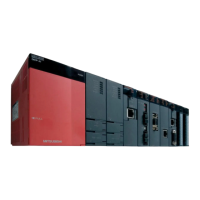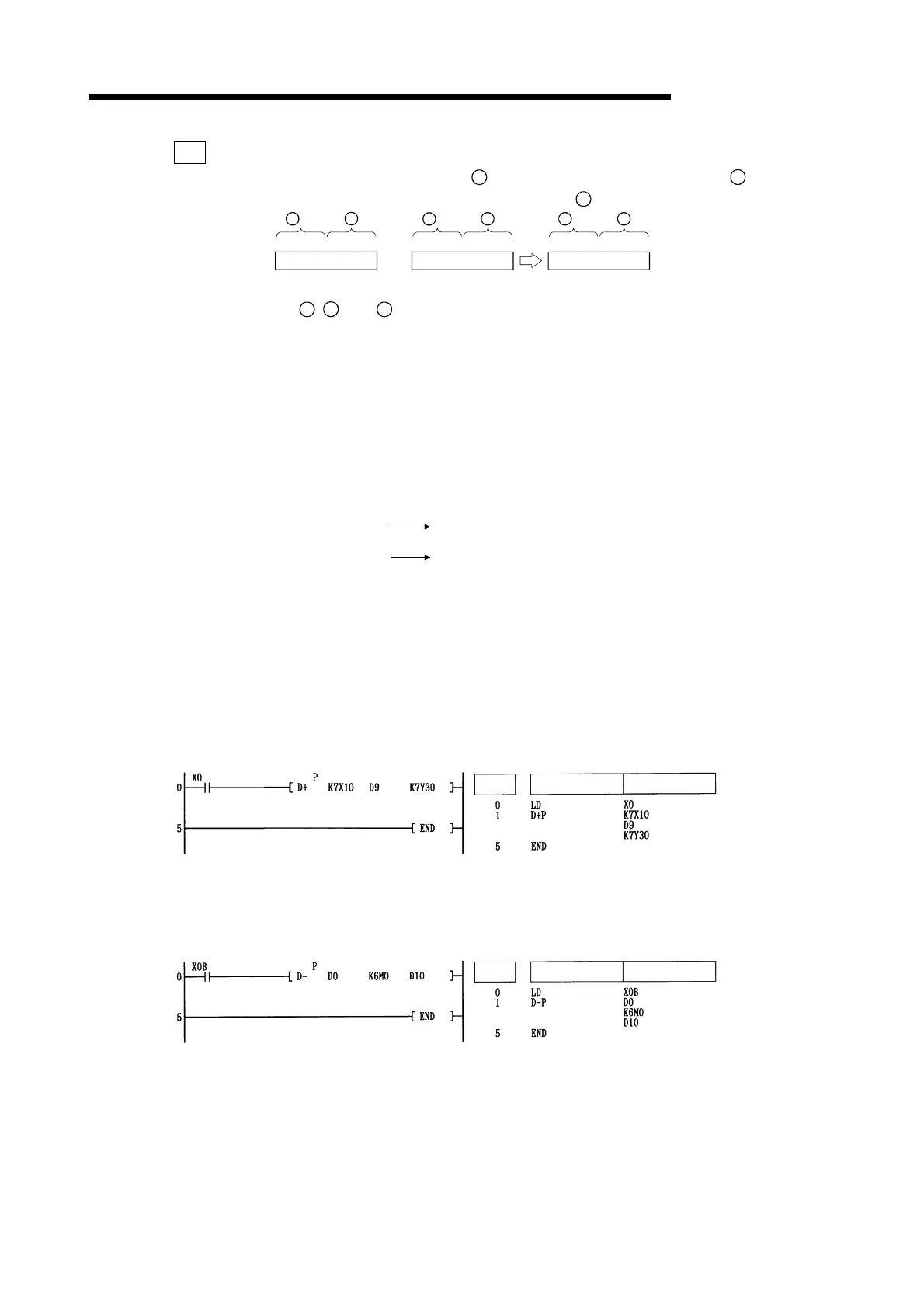6 - 23 6 - 23
MELSEC-Q/QnA
6 BASIC INSTRUCTIONS
D
-
(1) Subtracts 32-bit BIN data designated by
S1
from 32-bit BIN data designated by
S2
and stores
the result of the subtraction at the device designated by
D
.
123456 (BIN)
+1
567890 (BIN)
b31- -b16 b15- -b0
+1
444434 (BIN)
+1
S1 S2
D
S1 S2
D
-
b31- -b16 b15- -b0 b31- -b16 b15- -b0
(2) The values for
S1
,
S2
, and
D
can be designated at between -2147483648 and 2147483647
(BIN 32 bits).
(3) Judgment of whether the data is positive or negative is made on the basis of the most
significant bit (b31).
• 0 ....... Positive
• 1 ....... Negative
(4) The following will happen when an underflow or overflow is generated in an operation result:
The carry flag in this case does not go ON.
• K-2147483648
(H80000000)
•
K2147483647
(H7FFFFFFF)
-K2
(H2)
-K-2
(HFFFE)
K2147483646........Because b31 is 0,
the value is positive.
K-2147483647.......Because b31 is 1,
the value is negateve.
(HFFFE)
(H7FFFFFFE)
[Operation Errors]
(1) There are no operation errors associated with the +(P) or -(P) instructions.
[Program Example]
(1) The following program adds 28-bit data from X10 to X2B to the data at D9 and D10 when X0
goes ON, and outputs the result of the operation to Y30 to Y4B.
[Ladder Mode] [List Mode]
Steps
Instruction
Device
(2) The following program subtracts the data from M0 to M23 from the data at D0 and D1 when
XB goes ON, and stores the result at D10 and D11.
[Ladder Mode] [List Mode]
Steps
Instruction
Device
Artisan Technology Group - Quality Instrumentation ... Guaranteed | (888) 88-SOURCE | www.artisantg.com

